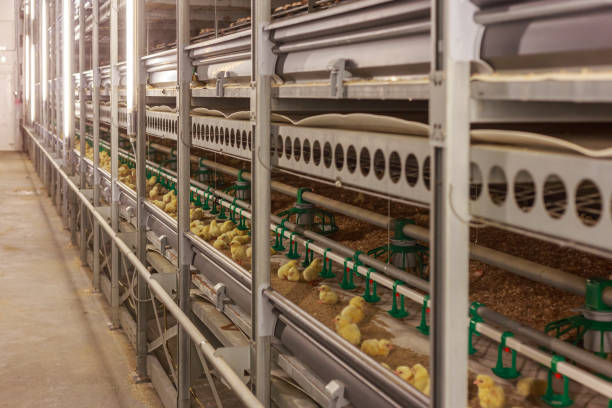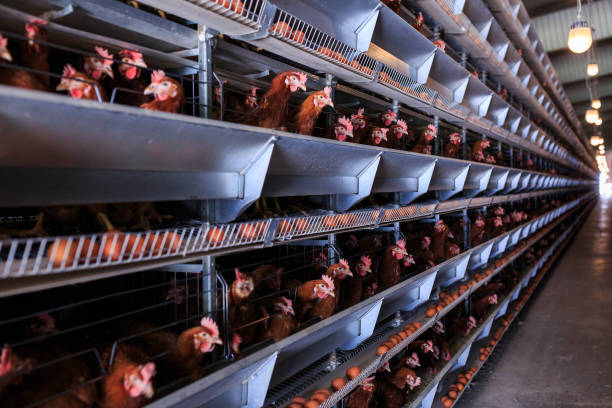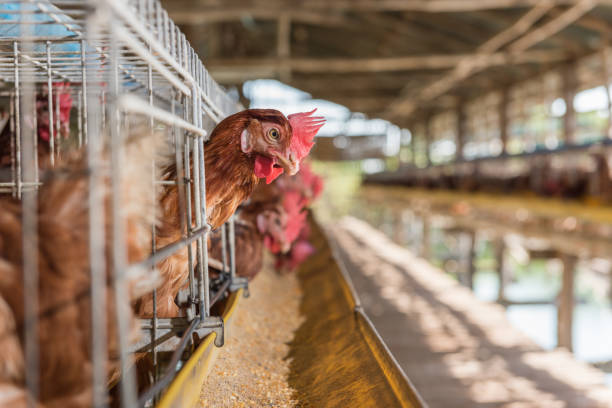
Cost-Effective Poultry Cage Equipment Solutions for African Farmers
Cost-Effective Poultry Cage Equipment Solutions for African Farmers
Africa’s poultry farming sector is growing rapidly, driven by increasing demand for affordable animal protein and rising local investments in agriculture. However, many African farmers are still looking for practical and budget-friendly equipment solutions that allow them to scale efficiently without sacrificing quality. One of the most crucial investments in a poultry farm is the cage system. Choosing the right type of cage can significantly influence productivity, disease control, feed efficiency, and overall profits.
In this article, we’ll explore how African farmers can make smart, cost-effective choices when selecting poultry cage equipment—especially egg-laying chicken cages and broiler cages—and how the right equipment can unlock new levels of success on the farm.
Understanding Local Needs and Challenges
Before diving into equipment options, it’s important to understand the specific challenges African poultry farmers often face. Power supply can be inconsistent in rural areas, transport infrastructure is sometimes underdeveloped, and access to imported equipment can be both expensive and slow.
On the flip side, there’s a growing movement toward localized poultry production. Governments and agricultural agencies across the continent are encouraging small- and medium-scale farmers to invest in efficient systems that reduce the dependency on imported eggs and meat. This provides a great opportunity for farmers to adopt modern caged systems while keeping costs under control.
The key is finding poultry cage equipment that balances affordability with functionality, ease of maintenance, and long-term durability—especially in tropical climates.
Why Cage Systems Are a Game-Changer
Cage housing systems are widely considered more efficient and productive than free-range systems for many farmers, and for good reason.
In a cage system:
Feed conversion ratio improves because feed wastage is lower
Disease transmission from ground contact is minimized
Egg collection becomes faster and cleaner
Broiler weight gain is more uniform due to reduced stress
This is particularly beneficial for African farmers looking to raise more birds with fewer inputs and better health outcomes.
Let’s take a closer look at two major types of poultry cages: egg-layer cages and broiler cages, and how they can be made more cost-effective for local farmers.
Egg-Laying Chicken Cages: A Smart Investment
Layer cage systems are designed specifically for raising laying hens for egg production. These cages typically come in multi-tier systems, allowing farmers to maximize vertical space and house a higher number of birds in a smaller area—this is especially useful for farmers with limited land.
There are several types of layer cage systems, including:
Conventional battery cages – Standard, low-cost systems suitable for small farms
Enriched colony cages – Include perching and nesting areas but require more space
Cage-free systems – Require more space, management, and investment
For African farmers, conventional battery layer cages are often the best entry point due to their simplicity and affordability.
Key Benefits of Layer Cages for African Farms
Lower disease risk – Since the hens don’t come into contact with their own waste, the risk of parasitic infections and bacterial diseases drops significantly.
Easier management – Feeding, watering, and egg collection are centralized and streamlined, reducing labor costs.
Scalability – Modular cage systems allow farmers to add more cages as their flock grows without starting from scratch.
Higher production rates – Well-managed caged systems tend to result in more consistent egg output than floor-based systems.
But what about the costs?
Many African farmers hesitate because they assume modern cage systems are expensive. The truth is, there are affordable, durable options available—especially from suppliers experienced in serving African markets.
Broiler Cages: Better Growth in Less Time
Broilers are chickens raised specifically for meat, and broiler cages offer a unique set of advantages over traditional floor-based rearing.
Broiler cage farming ensures:
Better feed efficiency (less waste, faster growth)
Lower mortality rates
Improved hygiene and disease control
Higher stocking density with easier management
In Africa, where land and labor can be limiting factors, broiler cages offer a way to produce more meat in less space—while maintaining high quality and safety standards.
These cages are usually stacked in two or three tiers, with automatic feeding and watering systems to reduce labor demand. Some models even allow for automated manure removal, which helps reduce odor and disease issues.
Choosing Cost-Effective Equipment: What to Consider
When looking for affordable yet reliable poultry cage systems, African farmers should focus on the following factors:
Durability and Climate Resistance
Cage systems should be built to last—especially in humid climates or areas with high rainfall. Galvanized steel cages are ideal because they resist rust and corrosion. They also stand up well to disinfectants and repeated cleaning.
Ease of Installation and Local Support
Choose equipment that’s easy to assemble, ideally with detailed instructions or video guides. Even better? Work with a supplier that offers local support, spare parts, or training sessions.
Energy Efficiency and Manual Options

In many rural African communities, access to electricity is inconsistent. So look for cage systems that don’t rely heavily on power. Manual feeding and watering systems can be used, or semi-automatic models that only require power for core functions like ventilation or manure removal.
Modular Design for Scalability
Modular cages allow you to start small and add more cages as your farm grows. This reduces upfront investment and allows capital to be used more wisely.
Local Manufacturing or Regional Suppliers
Importing cages from overseas can be expensive due to shipping and customs costs. Partnering with regional manufacturers or importers—especially those operating in East or West Africa—can reduce transportation costs and lead times.
Real-World Examples: Farmers Who Made It Work
Across Africa, many small and medium-scale farmers are proving that modern cage systems are both accessible and profitable.
For instance:
In Kenya, a farmer in Nakuru upgraded from a floor-based layer system to a three-tier battery cage system and saw a 25% increase in egg production within just three months.
In Nigeria, a group of women cooperative farmers invested in modular broiler cages and now sell over 1,000 broiler chickens every month, thanks to healthier, faster-growing birds.
These success stories show that with the right equipment, even limited budgets can yield impressive results.
How to Get Started: Steps for African Farmers
If you’re an African farmer considering a switch to cage systems but unsure how to begin, here are some practical steps:
Research and Compare Equipment Suppliers
Look for suppliers with experience in African conditions. Check reviews, ask for references, and compare prices. Pay attention to warranty, delivery time, and after-sales service.
Start with a Small Batch
Instead of investing in a full-scale system upfront, begin with a small group of birds and track performance. This lets you test the system and make adjustments before going all-in.
Train Yourself and Your Workers
Proper management is just as important as the equipment itself. Invest in basic training around feeding, cleaning, disease control, and maintenance. Many equipment suppliers offer free or low-cost training materials.

Explore Funding and Support Programs
Some African governments, NGOs, and financial institutions offer grants, low-interest loans, or technical assistance for poultry projects. Look into programs from agricultural ministries or development agencies in your area.
Think About Integration
Once your cage system is in place, consider how other systems—like automated feeders, solar-powered lighting, or manure composters—can enhance efficiency and reduce costs.
Overcoming Common Concerns

It’s true that cage farming isn’t without concerns. Critics often bring up animal welfare and environmental impact. However, modern cage systems have evolved to include more space per bird, better ventilation options, and integrated waste disposal systems.
Moreover, when compared to free-range farming in areas with poor biosecurity or predator issues, caged systems can actually provide safer conditions for the birds.
For African farmers concerned about environmental impact, using cage systems that include manure collection and recycling mechanisms can reduce odor and waste runoff. Cage farming, when done right, is just as sustainable as other methods—especially when combined with eco-friendly practices like composting or solar energy.
Final Thoughts: Investing Wisely for the Future
Cost-effective poultry cage equipment is not just about saving money—it’s about making a smart investment in the future of your farm. Whether you’re raising layers for egg production or broilers for meat, the right cage system can help you achieve better health, higher productivity, and more consistent profits.
For African farmers, the challenge is to find equipment that’s affordable, durable, and suited to local conditions. But with the right supplier, some careful planning, and a step-by-step approach, it’s entirely possible to build a successful modern poultry operation—no matter your location or budget.
If you’re ready to take your poultry farm to the next level, now is the time to explore cage equipment solutions that fit your needs. The market is more accessible than ever, and with the right choice, you could see results sooner than you think.
Your journey to a more productive, profitable poultry business starts with a single cage—but it goes much further from there.
